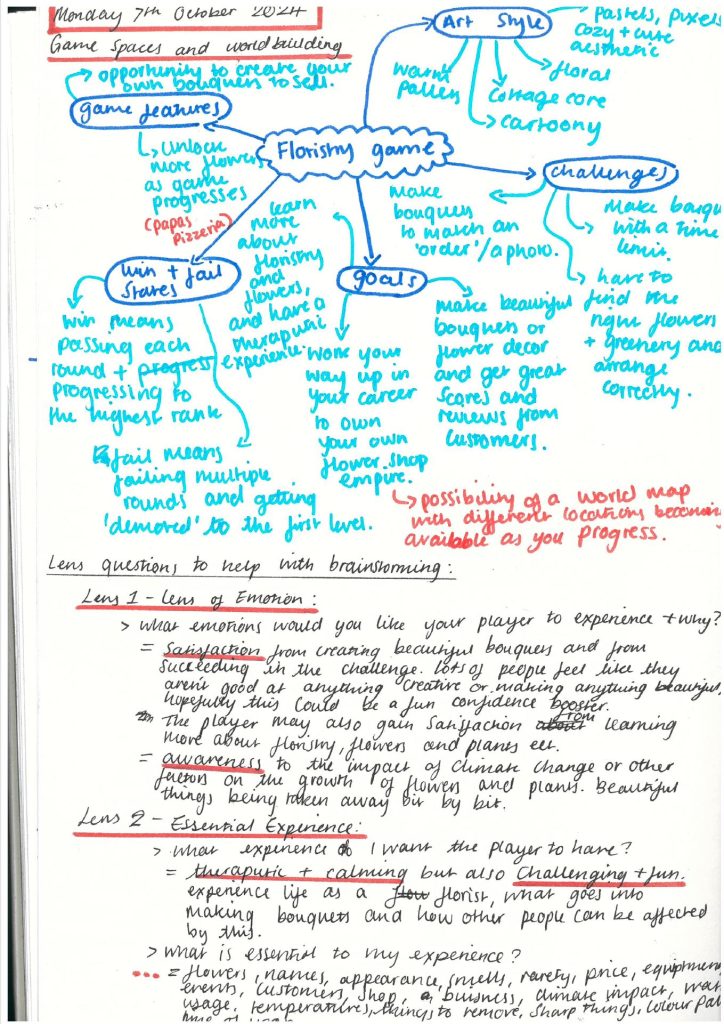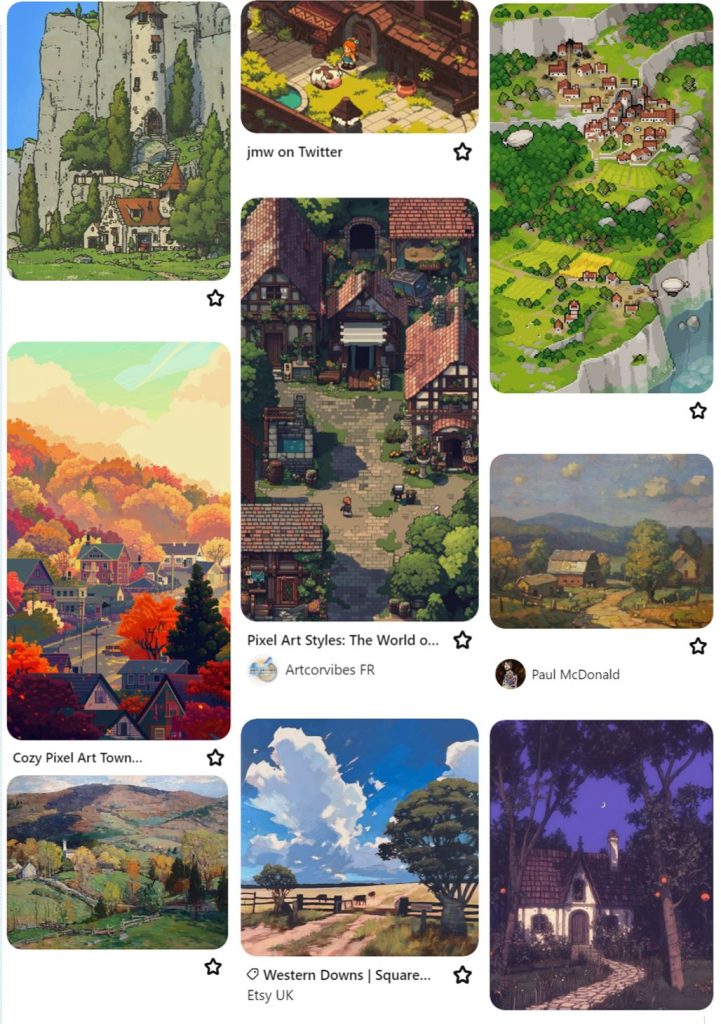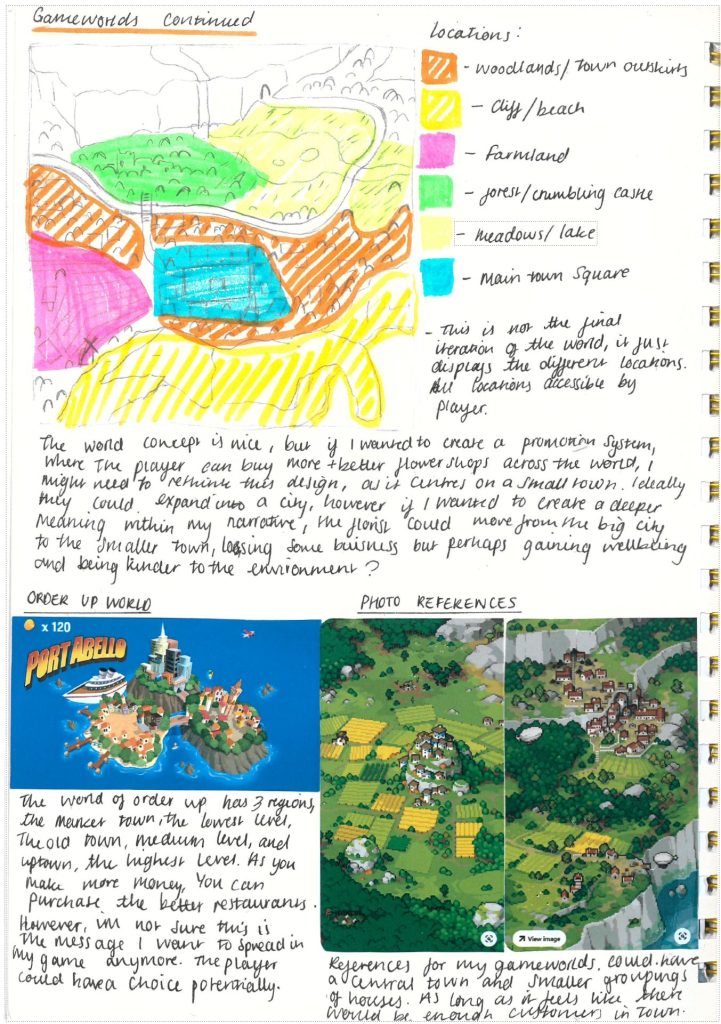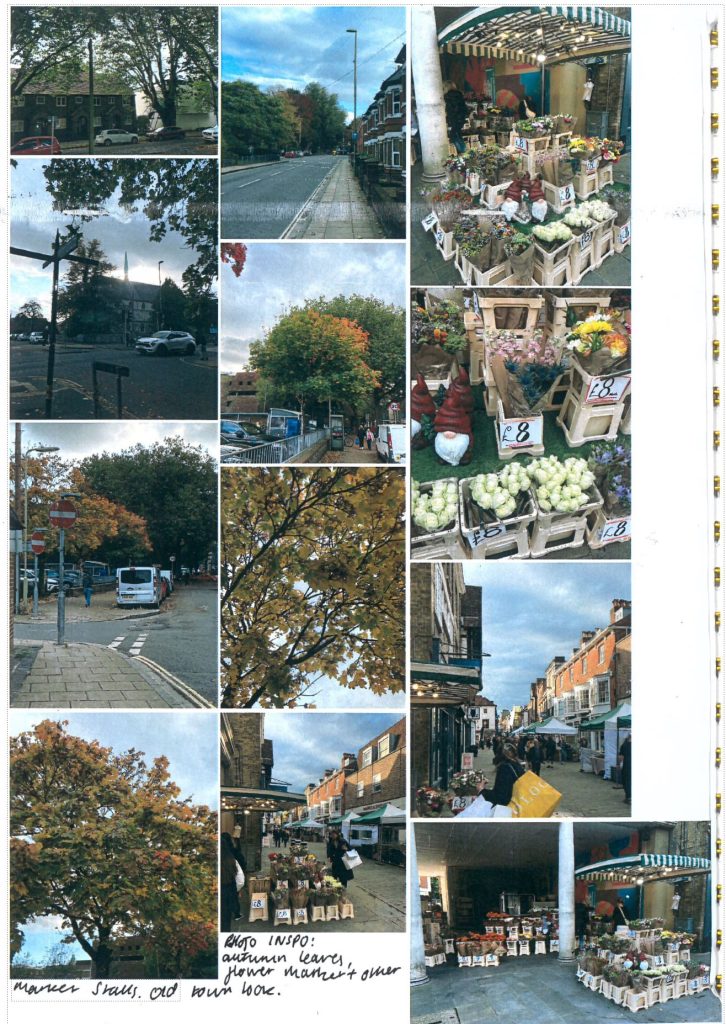Brainstorming Continued:
This week I refined my brainstorming process by focusing solely on my idea for the floristry game. I made a new mind map with all my ideas so far, and included several research points. I also applied our academic reading to my brainstorming process by applying the questions about essential experience, emotion and inspiration to my game.


Creating a game about working as a florist would allow me to create a cutesy game-world, with various important locations to visit, such as the flower market, or places within nature. My focus for the world would be a small town with a strong community, something many people long for, and an ideal setting to showcase the problems the player will face in-game. There are also a lot of potential game mechanics and themes I could cover when focusing on floristry, not only the stages of flower preparation and arranging, but also the challenges of running your own business , or limitations to your work due to climate change affecting flower availability and prices, etc. The game could bring awareness and educate players on issues as well as provide them with a fun way to wind down after a tough day.
Research Points:
After creating my mind map I came up with these research points:
Games to play as research:
- Papa’s Pizzeria – I chose to play this game as inspiration for my game mechanics and interface layout.
- Order Up! – I remember this game had a mechanic where the player had to decide how much food to buy in preparation for what customers could order the next day, as well as the chance to move up to the top of your career. These were ideas I had considered for my game, so I thought it would be important to research a game that already has these features.
- Stardew Valley – While it doesn’t relate fully to my fundamental gameplay idea, the aesthetics and broader messaging of Stardew Valley are well executed and have been influential in my brainstorming process so far.
Other research to conduct:
- Research into floristry – I could look online or in the library, or even conduct an interview with a florist.
- Research the effect of climate change on floristry – Or any other issues currently facing the industry and how they cope.
- Research into flowers – names of flowers, plants, their requirements and which seasons they grow in etc.
- Create mood-board – research aesthetics.
- Taking inspiration from the world – memories, experiences, movies, shows, books, senses…
Game-world lecture notes:
In our Thursday lecture we dissected areas within our game-world, identifying the interactive locations and their purpose in gameplay. Below are the 3 key areas of my game and their features.

Mood-board:
I saved any picture that I could envision as my game-world. Some of the pictures gave me inspiration for a game-world map. Even if I don’t end up needing one in the actual game, it would be useful to plan out locations and their functions. When searching up inspiration, I was on the lookout for pictures that evoked a rural, autumnal aesthetic, and lots of pixel artwork.



Game-world designs and Break-Downs:
Here are some screenshots from my notebook that explain the development of my game-world:


I battled a bit with some conflicting ideas I had. One Idea was that the player could expand their shop into bigger cities, perhaps owning multiple shops as they progress in-game. The other was to focus on the dynamic of a small town, and its value. I wasn’t sure if the two ideas could work together. On top of this, I wasn’t sure if realistically there would be any demand for a florist if the town was too small. In the end I decided that the town could consist of several scattered groupings of houses, so it would feel larger, therefore solving my demand issue. I also decided that if I still wanted the expansion mechanic later on in development, I could give the player the choice to grow the business or stay content in the small town.
Photo-References:
When photographing, I took pictures of anything I felt had the ‘essence’ of Winchester, things that defined the city. I also realised that lots of the ideas I had for my game-world had come from the environment around me. So taking these photos was almost like capturing my own essential experiences, and freezing them in time. Autumn leaves, cloudy skies, markets and flower stalls with their swirly labels and fairy lights. Old historic architecture and charmingly quirky shops. The last few photos are from the show Gilmore Girls, as I wanted to compare the small town environment of Stars Hollow with Winchester, as well as take more inspiration from it.



While the architecture of ‘Stars Hollow’ is much more American than Winchester, I like the combination of the two places. Stars Hollow has a clearly defined town centre, whereas Winchester has a long strip of shops lined with markets. But they are both passionate about decoration and festivals. This is the essence of community I want to capture in my game.
Game-play Research:
More screenshots from my notebook that show the research I did on Order Up! and Papa’s Pizzeria:


Everything I noted down in my research was something I was interested in having in my game. These features would take place during the floristry shop gameplay. Later on during my prototyping stage, I will determine if I want to use these features in my game, or if I no longer think they work.
End of week 2!
Reply